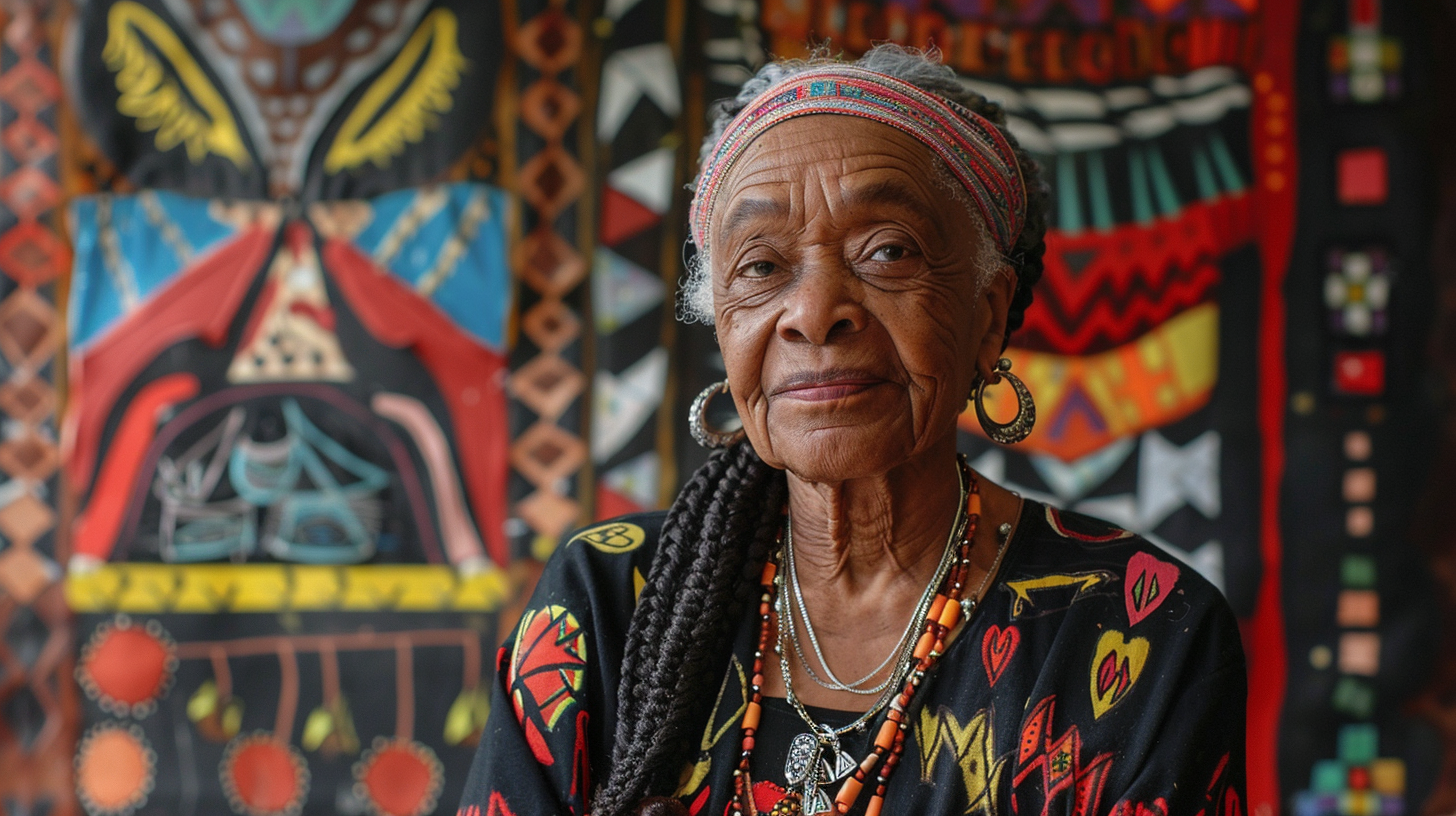
Future Trends in the Art Industry: A Reflection on Faith Ringgold’s Legacy
Faith Ringgold, a trailblazing artist whose work spanned seven decades, left an indelible mark on the art world. Her extensive career, which included bestselling children’s books, activism, and work across various mediums, paved the way for future generations of Black visual artists and women artists. With her recent passing at the age of 93, it is crucial to analyze the key points of her life and work, and explore potential future trends in the art industry related to these themes.
One of the most notable aspects of Ringgold’s artistic practice was her painted quilts, particularly her renowned piece, “Tar Beach” (1988). This artwork, which tells the story of a young girl flying from her Manhattan apartment building, was later adapted into a children’s book. Ringgold’s use of fabric in her art was influenced by Tibetan thangkas she saw at the Rijksmuseum in Amsterdam, but quilting also had deep roots in her family history. Through quilts, she visually depicted her travels, love for art history, and addressed important social issues such as the Middle Passage. This integration of personal narratives and historical themes in art is likely to continue as a trend in the future. Artists will draw from their own experiences and cultural heritage to create meaningful and visually stunning pieces that resonate with viewers.
Ringgold’s versatile practice extended beyond quilts to include dolls, political posters, performances, and writing. This multidisciplinary approach allowed her to explore different mediums and reach diverse audiences. In the future, artists will continue to embrace interdisciplinary practices, combining elements of visual art, performance, literature, and technology to create immersive and thought-provoking experiences for viewers. This integration of various art forms will blur traditional boundaries within the art industry and foster collaboration across different creative fields.
Furthermore, Ringgold’s activism and dedication to promoting Black and women artists played a pivotal role in reshaping the art world. She actively picketed museums that excluded these artists and defended free speech. This commitment to advocacy and social change will remain as a key trend in the art industry. Artists will continue to use their platforms to challenge institutionalized biases and fight for equal representation and opportunities for marginalized communities. Additionally, collaborations between artists, activists, and organizations will become more prevalent, amplifying marginalized voices and driving social transformation through art.
It is worth noting that despite Ringgold’s groundbreaking contributions, major museums only fully recognized her work in recent years, as they grappled with their own histories of racism and sexism. This delayed recognition highlights the importance of institutional change within the art world. Moving forward, museums and galleries will need to actively address historical biases and work towards diversifying their collections and exhibitions. This will involve providing platforms for underrepresented artists, dedicating resources to research and acquisition of artworks by marginalized artists, and actively engaging with diverse communities.
In terms of technology, Ringgold’s development of the Quiltuduko app demonstrates the potential for digital innovations in the art industry. As technology continues to advance, artists will explore new ways to engage audiences and create interactive experiences. Virtual reality, augmented reality, and other emerging technologies will be integrated into art exhibitions, allowing viewers to immerse themselves in the artwork and explore different perspectives and narratives.
In conclusion, Faith Ringgold’s artistic legacy and activism offer valuable insights into potential future trends in the art industry. The integration of personal narratives, interdisciplinary practices, advocacy for marginalized artists, institutional change, and technological advancements are key areas to watch. The art world has come a long way in recognizing diverse voices and experiences, but there is still much work to be done. Embracing these trends and implementing recommendations will ensure a more inclusive and transformative art industry for future generations.
References:
1. Hilarie M. Sheets, “Faith Ringgold, Who Captured the Power and Pain of Black American Life, Dies at 89,” The New York Times, November 14, 2021.
2. Sarah Douglas, “Faith Ringgold: Turning Racism’s Echoes Into Art,” ARTnews, February 5, 2016.
3. Kavi Gupta et al., “Faith Ringgold,” Grove Art Online, Oxford Art Online.
4. “About Quiltuduko,” Quiltuduko website, 2021.
HTML Content Block for WordPress:
“`html
Future Trends in the Art Industry: A Reflection on Faith Ringgold’s Legacy
… [Rest of the article content]
References:
- Hilarie M. Sheets, “Faith Ringgold, Who Captured the Power and Pain of Black American Life, Dies at 89,” The New York Times, November 14, 2021.
- Sarah Douglas, “Faith Ringgold: Turning Racism’s Echoes Into Art,” ARTnews, February 5, 2016.
- Kavi Gupta et al., “Faith Ringgold,” Grove Art Online, Oxford Art Online.
- “About Quiltuduko,” Quiltuduko website, 2021.
“`
